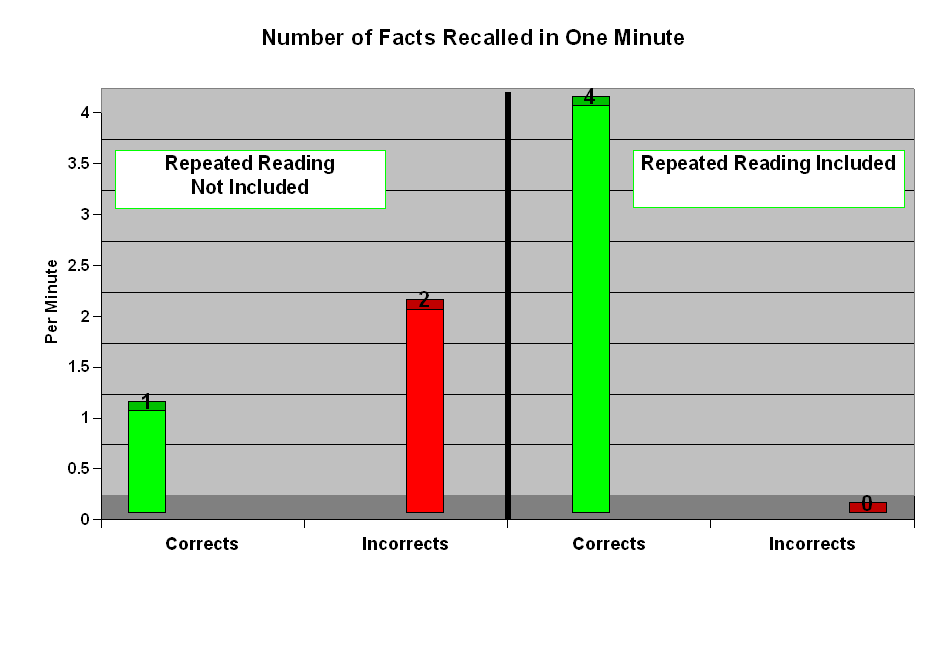
|
Use of Skin-Shock at the Judge Rotenberg Educational Center (JRC) |
Is There A Relationship Between Reading Comprehension and Reading Fluency?
Michelle Harrington, Edward Langford, Matthew L. Israel and Erin Holland
Judge Rotenberg Educational Center
The Judge Rotenberg Educational Center (www.judgerc.org) operates day and residential programs for children and adults with behavior problems, including conduct disorders, emotional problems, brain injury or psychosis, autism, and developmental disabilities. The fundamental approach taken at JRC is the use of behavioral psychology and its various technological applications, including behavioral education, programmed instruction, precision teaching, behavior modification, behavior therapy, behavioral counseling, self-management of behavior, and chart-sharing.
This study explores the use of Repeated Reading as a technique to improve reading comprehension. At JRC, the majority of the curriculum makes use of the basic principles of Precision Teaching (Potts, Eshleman & Cooper, 1993), to include the important component, fluency. (Binder, 1987). Students must work not only quickly, but accurately, for errorless performance. Also important is the retention of the information that is being learned. This study will show how using these principles affect reading comprehension.
Methods
Participants and Setting
There were 14 participants involved in this study, 3 male and 11 female. These participants were chosen because they had matching reading decoding and reading comprehension grade equivalences, according to recent testing using the Kaufman Test of Educational Achievement. The mean age was 16.7; with a range of 14.5 to 21.1. The mean was 84, with a range of 52 to 117. Participants’ diagnoses included developmental disorder, mood disorder, learning disorder and mental retardation. All participants lived in JRC group homes and attended school at the JRC school building.
Measures and Instruction
All participants read passages out of the Timed Readings in Literature series. This is a series of readers that has 10 books that can be matched to grade level. These books were chosen because they were unfamiliar to the participants. They used phrases and words that the participants would not normally encounter. Participants used whichever book matched their reading decoding and reading comprehension level.
The 14 participants were paired up according to reading decoding and reading comprehension level. It was randomly selected which participant in each pair would engage in repeated reading and which would not. The participants who were assigned repeated reading read a passage to a predetermined level of mastery, usually between 150 and 200 words in a minute. They would do at least three repeated reading timings a day. After each reading timing, the participant would do a one minute timing where they were required to write as many facts from the passage that they could recall. Once the participant was able to read at their predetermined aim, they were given 10 comprehension questions that accompany the passage. They answered these questions without looking back at the passage and were not timed. The participants who were not assigned repeated reading read the passage one time without being timed. They then did a one minute timing where they wrote as many facts from the passage as they could remember. They then answered the accompanying comprehension questions. The participants that did repeated reading were using two learning channels; both see say and think write, as suggested by Lindsley. (1990)
Results
The participants that were in the repeated reading group answered a mean of seven questions correctly and three questions incorrectly, when answering the comprehension questions that accompany the passage. The participants who did not do repeated reading answered a mean of six questions correctly and four questions incorrectly when doing the same questions.
The participants who were in the repeated reading group were able to recall a mean of four facts with no incorrect facts for each passage. The participants who did not do repeated reading were able to recall a mean of one correct fact and two incorrect facts for each passage.
Discussion
The current data suggests that reading to fluency improves reading comprehension. The participants who did repeated reading were able to recall three more facts than the participants who did not do repeated reading and were much more accurate. This suggests that the participants who did the repeated reading were able to recall the information they read much more than the participants who did not do repeated reading, which is important to note because the material they read was so unfamiliar. Further study should be done to explore the long term retention of the information read.

References
Binder, C. V., (1987). Fluency-building. Precision Teaching and Management Systems, Inc.
Lindsley, O. R. (1990). Precision Teaching: By Teachers for Children. Teaching Exceptional Children, Spring 10-15.
Potts, L., Eshleman, J. W., & Cooper, J. O., (1993). Ogden R. Lindsley and the historical development of Precision Teaching, The Behavior Analyst, 16, 177-189